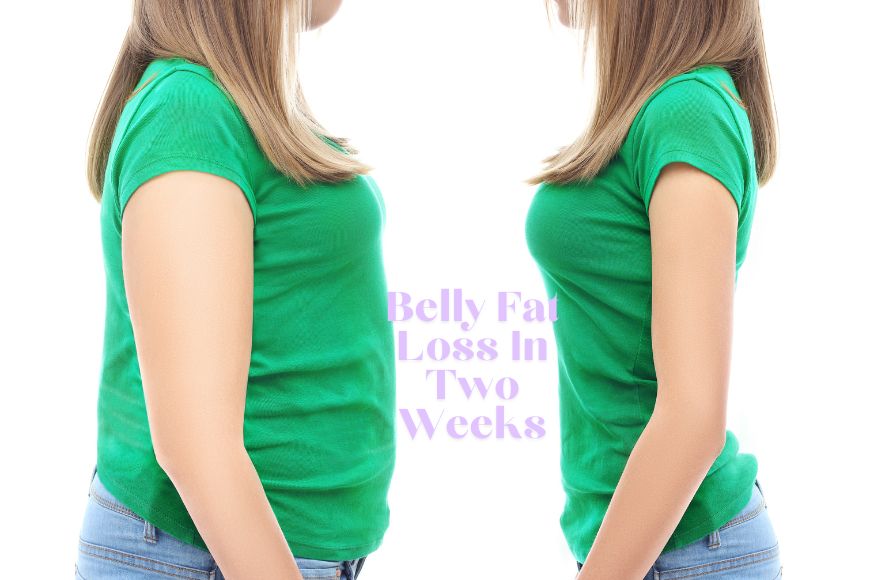Begin with walking for an additional minute each day.
Resolving to reduce weight is and ought to be an individual choice. It is reasonable to seek counsel if you’re wondering how to reduce abdominal fat.
It’s critical to acknowledge right away that there is no specific location on your body where weight loss occurs. Consider more than just crunches and planks when it comes to your stomach and take a well-rounded approach. According to Chris Gagliardi, a certified personal trainer at the American Council on Exercise (ACE), “it’s got to be more losing fat as a whole.”

Basically, you’ll probably lose inches around your waist at the same time that you lose weight in other areas of your body.
Remember that having excess weight is not the only sign of a healthy body; you can have abdominal fat and still be in good health. To make sure you and your doctor are on the same page, it’s also a good idea to discuss before making any more significant lifestyle changes. These are the greatest strategies to lose belly fat, nevertheless, if you’re just wanting to make minor changes.
How to trim two weeks worth of belly fat
Weight loss, and sustainable weight loss in particular, is typically a gradual process. There are a few things you may do to expedite the procedure.
1. Recognize that your actions will change.
Just being conscious of the choices you make plays a significant role in weight reduction. For instance, you could forget how much you’re eating or drinking when you’re out with friends for happy hour. But you can change direction if you pause for a moment, stand back, and realize it. According to Gagliardi, “being aware of it and then making plans for what else I can be doing, that might give me the same benefit of eating comfort foods.”
2. Monitor your caloric intake.
Losing weight primarily involves burning more calories than you take in. For example, a weight reduction app, or even just a pen and paper, can help you figure out how many calories you need to burn at the gym or reduce from your diet in order to reach your objectives, as 3,500 calories equals one pound of fat. “One pound of weight loss and 3,500 calories burned per week would result from burning 500 extra calories per day, seven days a week.
You may quickly determine what you need to achieve your goal by using the Body Weight Planner provided by the National Institutes of Health. When using this online tool, you will be asked to enter details about your current weight and level of exercise as well as your weight loss objectives and the amount of time you intend to spend achieving them. It will then provide you with an approximate daily calorie intake that you should aim for. It won’t provide you specific instructions on how to drop your belly fat, but it might still serve as a general guidance.
3. Consume more fiber.
Foods heavy in sugar and processed carbohydrates don’t really satisfy your appetite, so you end up grabbing for more of them. Eat more fibrous foods instead, such as chia seeds, whole grain breads, cereals, fruits, veggies, and legumes. According to Lawrence Cheskin, M.D., chair of the nutrition and food studies department at George Mason University and assistant professor of health, behavior, and society at Johns Hopkins University, “they fill you up more” because fiber slows down digestion.
According to a 2015 study published in the Annals of Internal Medicine, those who struggle to stick to a rigorous diet might still lose weight by streamlining their weight reduction strategy to simply increase their intake of fiber. Based on a 2,000-calorie diet, women should strive for at least 25 grams of fiber per day, according to the most recent U.S. Dietary Guidelines. Try our high-fiber diet first.
4. Take a daily stroll.
“Walking is a pretty good entry point for people,” adds Gagliardi, if you don’t already have a regular workout regimen. In The Journal of Exercise Nutrition & Biochemistry, a small study reported that obese women who walked for 50–70 minutes three days a week for 12 weeks reduced their visceral fat by a substantial amount when compared to a control group that remained sedentary.
“There are health benefits to that, even if your starting point is a one-minute walk, if that’s more than what you’ve been doing,” adds Gagliardi. When attempting to lose weight, one of the biggest mistakes people make is attempting to do too much too fast and burning out.
According to Gagliardi, “starting small and working your way up is better than overdoing it and giving up.” One simple strategy is to make a commitment to taking a fast 10-minute walk after supper, and then gradually extend the duration as you get more accustomed to moving around on a regular basis.
5. Start your strength training.
If you want to lose belly fat, especially if you want to keep it off over time, you should engage in full-body strength exercise. According to Dr. Cheskin, almost everyone’s workout regimen should include strength training. This is because building muscle through strength exercise can help you replace body fat. Additionally, since muscle has a high metabolic activity, it will continue to burn calories even after exercise, helping to reduce total body fat. Bonus: Dr. Cheskin believes that if you struggle with dieting, you’ll have a little more flexibility when your metabolic rate increases as a result of muscle gain.
6. Accept good fats.
You must consume fat—the good type, that is—if you want to reduce your body fat percentage.You might feel more content after eating by including monounsaturated and polyunsaturated fats, which are good fats. According to the Academy of Nutrition and Dietetics, “unsaturated fatty acids, which can be found in foods like olive oil, nuts, avocados, fatty fish, and eggs, are fat sources that I recommend boosting in the diet because they can help increase satiety while providing a variety of health benefits when consumed in moderation.” Adding sliced avocado to salads, eating wild salmon twice a week, and drizzling on some peanut butter before or after a workout are some ways to up your consumption of healthy fats.
7. Fill up on protein.
Protein is the main topic of discussion for a reason: in addition to keeping you full, it repairs the microscopic tears in your muscles created by strength training. They gain strength and size as a result, gradually losing body fat. Dr. Cheskin advises aiming for at least 70 grams of protein throughout the day as a general guideline.
This is very crucial to do before working out. We’re all guilty of working out hard at the gym and then, since we’re so hungry, going straight to Chipotle. What was the outcome? You gain more belly fat when you consume more calories than you expend.
Eat a snack containing at least 12 grams of protein before working out to prevent post-workout hunger, advises Dr. Cheskin. And if, afterwards, you’re still hungry? Dr. Cheskin advises starting with self-examination to ensure that the hunger is genuine and not being caused by dehydration. After that, have a snack high in protein and some carbohydrates, such as a protein bar made with whole grains.
8. Alright, you’re free to perform crunches now.
You can focus on gaining lean muscle mass, which in turn aids in fat burning, even when you cannot spot reduce fat. “Every movement you perform involves literally dozens of muscles between your shoulders and hips,” claims Chris DiVecchio, author of The 5 x 2 Method: Revealing the Power of Your Senses and a NASM-certified personal trainer. Making the appropriate exercises is the first step toward having a trim waist.
According to Gagliardi, set aside at least 24 hours between ab exercises and try to perform them three or four times a week on non-consecutive days. Planks, crunches, and bicycle crunches are a few easier exercises you might begin with throughout sessions. You should be activating your core, or contracting your ab muscles, in every workout you perform, even if you are only specifically targeting your abs three or four times a week, advises Gagliardi.
You may work out your abs at your home with a plethora of options. As soon as you feel comfortable with your ab regimen, advance to more difficult workouts like Russian twists with weights and side-to-side med ball smashes, advises DiVecchio.
9. Make an effort to reduce your tension.
Every aspect of your body can be negatively impacted by stress, but how you handle it will determine whether or not you achieve your weight reduction objectives. “I believe the majority of stress’s effects are behavioral rather than neurochemical,” Dr. Cheskin states. “We use food as a substitute for coping with stress, which makes us eat more.”
In actuality, it’s typically far easier to eat to relieve stress than it is to deal with it head-on. “When it comes to opening packages or boxes, people tend to gravitate toward things that don’t require assistance from others, are instantly satisfying, and don’t require a lot of work,” explains Dr. Cheskin.
Eating under stress will simply make your belly grow larger rather than smaller. If you catch yourself overindulging in stress food, stop and consider what’s going on in your life and what you can do to address it. Instead of reaching for a bag of Doritos, try to solve the problem or discuss it with a therapist.
10.Make getting enough sleep a priority.
The success of your weight loss efforts greatly depends on how much sleep you get, both too little and too much. According to Dr. Cheskin, sleeping too much is probably bad for your health. “Yet getting too little sleep is worse,”
As an illustration, a 2017 review and meta-analysis conducted in the United Kingdom discovered that individuals who slept for 5.5 hours or less each night consumed 385 more calories the following day than those who slept for seven to twelve hours or more. Furthermore, they liked to snack on high-fat, high-calorie items like chips.
You have more time to snack and make other bad decisions that may hinder your weight loss if you only get a few hours of sleep each night. The optimal amount of sleep, according to Dr. Cheskin, is usually seven or eight hours, however this will vary from person to person depending on how good you are at achieving your weight loss objectives.



